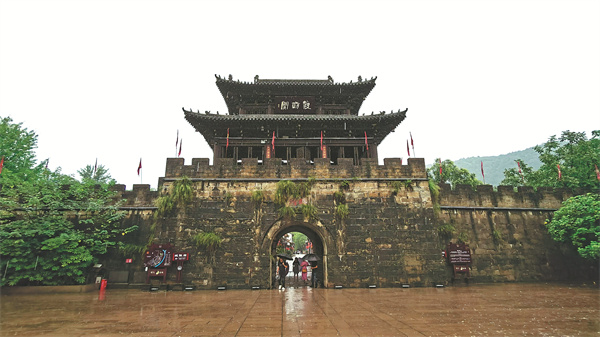

During major holidays, performers in ancient attire show how magistrates in a bygone era tried cases in the magistrate's building, Pu said.
Walking around in the more than 2,300-year-old town, history buffs admire its ubiquitous low buildings in the ancient Chinese construction style.
An archaeological find in 2014 just outside the town confirmed Zhaohua's claim to antiquity.
Before building a road outside Zhaohua that year, Guangyuan's cultural heritage bureau invited the Sichuan Provincial Cultural Relics and Archaeology Research Institute to find out whether there were any relics beneath the planned construction site.
A two-month investigation uncovered the ruins of an ancient city built in a rectangular shape that covered nearly 50,000 square meters. Archaeologists called it the Baiyanba ancient city site.
Judging from pottery pieces unearthed at the site, archaeologists thought it dates to the Western Zhou Dynasty (c. 11th century-771 BC).
It is the second pre-Qin (before 221 BC) site found — after Sanxingdui — and the first of the Western Zhou Dynasty in Sichuan, according to Gao Dalun, former director of the institute.